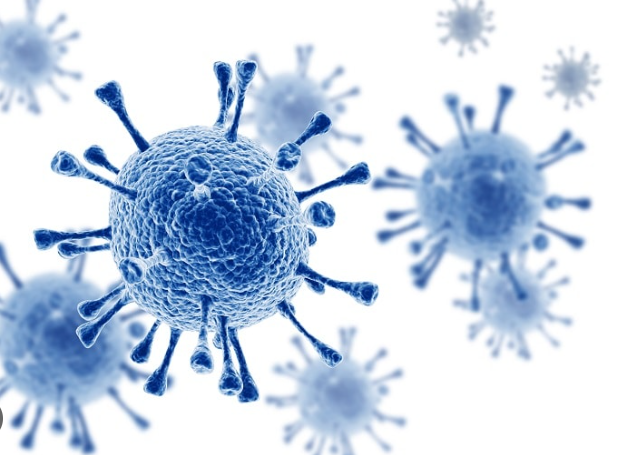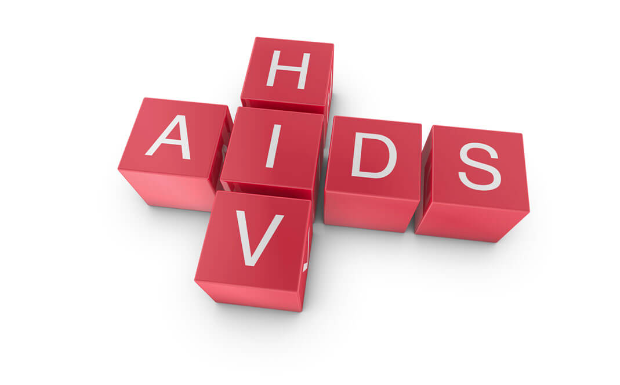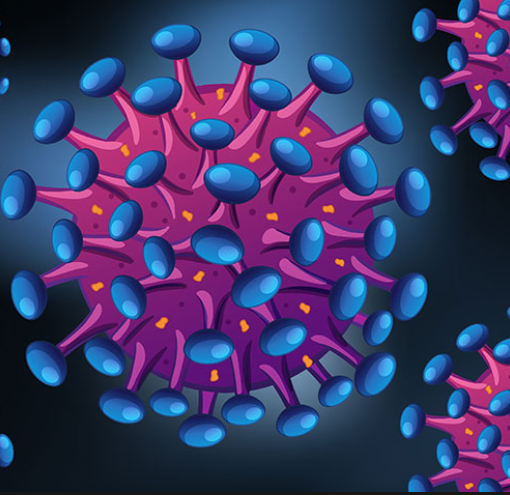Learn about the symptoms and causes of HIV/AIDS, as well as promising treatments.
About 40 years ago, a mysterious disease began to appear among, primarily, gay men. By the early 1980s, it had taken such a deadly toll on that community that the still-unnamed disease was called “gay cancer.” No one knew what caused it or how to treat it, and it was almost invariably a death sentence for those who contracted it.
Thankfully, those awful times are now a thing of the past. Research is still ongoing, but it has successfully identified the illness as acquired immunodeficiency syndrome, or AIDS, and identified the virus that causes it: the human immunodeficiency virus, or HIV. Additionally, immunologists have created a number of antiretroviral medications over time to fight the HIV virus and essentially stop the onset of AIDS symptoms.
Also read-Blood Cancers : A Patient’s Guide to Blood Cancers And Its Symptoms

As a result, “what was once a uniformly fatal disease has been transformed by science into a manageable chronic condition for many,” per the National Institute of Allergy and Infectious Diseases.
What is HIV/AIDS?
People sometimes confuse or conflate HIV and AIDS. It is a virus that spreads through certain body fluids, like semen and blood. According to the Centers for Disease Control and Prevention, this virus attacks the body’s immune system, specifically the CD4 cells, also more commonly known as T cells. These cells are critical in helping the immune system fight off infections.

As the virus spreads in the body, it can destroy so many of these cells that the immune system can no longer fight off infections and disease. A collection of infections and diseases, which vary depending on the patient, is known as a syndrome; thus, the name of the disease is acquired immunodeficiency syndrome, or AIDS. “Opportunistic infections or cancers take advantage of a very weak immune system and signal that the person has AIDS,” the CDC states.
According to statistics from the CDC:
- 38,739 people received an diagnosis in the U.S. and six dependent areas in 2017. The annual number of new diagnoses has remained stable in these areas between 2012 and 2016.
- 17,803 people in the U.S. and six dependent areas received an AIDS diagnosis in 2017.
- 15,807 people diagnosed with it in the U.S. died in 2016. Nearly half (47%) of these deaths were in the South; 3,630 (23%) were in the Northeast; 2,604 (16%) were in the West; 1,720 (11%) were in the Midwest; and 379 (2%) were in the U.S. dependent areas.
- 1.1 million people in the U.S. are living with it today. About 1 in 7 (15%) are unaware they are infected.
Causes
According to amfAR, the Foundation for AIDS Research, it is carried in body fluids such as blood, semen, vaginal secretions, and breast milk. The virus can enter a new cell that is susceptible to infection. Usually, it is transmitted through:

- Unprotected sexual contact (vaginal or anal) with an HIV-positive individual
- Unprotected oral intercourse with an HIV-positive person
- Sharing injecting supplies like syringes, needles, and other items with an HIV-positive person. According to AmfAR, HIV can linger in used syringes for up to 30 days.
- Transmission from mother to child during nursing or childbirth.
HIV/AIDS organizations are now concerned about the opioid crisis that is sweeping across many parts of the United States because drug addicts may inject drugs using contaminated needles.
“Among those who use opioids, we’ve seen a resurgence in new infections,” says Brian Honermann, deputy director of public policy at AmfAR. His team, along with others, is concentrating more on the elevated risk of it infection in this demographic. “Our goal is to gather information regarding HIV and opioids, as well as legal frameworks, syringe exchange program accessibility, and treatment medication access,” he states.
Infected needles used in tattoos or body piercings can also spread the virus. Anyone thinking of getting a tattoo or piercing should be extra cautious and ensure that the artist uses only single-use, sterile instruments.
It is not transmitted through food or air, like a cold or flu virus, or by casual touching. “There has never been a case where a person was infected by a household member, relative, coworker, or friend through casual or everyday contact such as sharing eating utensils or bathroom facilities, or through hugging or kissing,” AmfAR reports.
Symptoms
According to HIV.gov, managed by the U.S. Department of Health and Human Services, there are many different it symptoms. The symptoms one develops depend on the person and what stage of the disease he or she is in.

The three stages of HIV infection are:
Stage 1: Acute HIV Infection Within two to four weeks of being infected by HIV, about two-thirds of people will have a flu-like illness as the body tries to fight the infection, but that means many have no symptoms during this stage. These flu-like symptoms include:
- Fever.
- Chills.
- Rash.
- Night sweats.
- Muscle aches.
- Sore throat.
- Fatigue.
- Swollen lymph nodes
- Mouth ulcers.
Symptoms can last anywhere from a few days to several weeks. But, again, some people do not have any symptoms at all during this early stage of it.
Stage 2: Clinical Latency During this stage, the virus multiplies, but most people will not have any symptoms. Without treatment, the latency stage can progress rapidly, or it can last 10 or 15 years. Treatment during this stage can keep the virus in check. Although people who are receiving proper treatment are less likely to transmit it, it’s important to remember that the virus can still be spread to others, even if no symptoms are present.
Stage 3: AIDS. Once it infection has seriously compromised the immune system, it can allow what are known as opportunistic infections, or OI, and some forms of cancer to appear. Symptoms of AIDS-related diseases can include:
- Rapid weight loss.
- Recurring fever or profuse night sweats.
- Extreme and unexplained tiredness.
- Prolonged swelling of the lymph glands in the armpits, groin or neck.
- Diarrhea that lasts for more than a week.
- Sores of the mouth, anus or genitals.
- Pneumonia.
- Red, brown, pink or purplish blotches on or under the skin or inside the mouth, nose or eyelids.
Diagnosis
A blood test is the only method to determine whether you are HIV positive. Anybody between the ages of 15 and 65 should get tested for it at least once, advises the U.S. Department of Health and Human Services. Every pregnant woman must be tested as well. Results can take a few days to a few weeks to arrive, and they are fully protected by HIPAA privacy laws. However, there are also fast tests that can yield less accurate results in about 20 minutes. To confirm the results and make a positive HIV diagnosis, additional testing must be done after a positive initial test.

Those at higher risk for HIV infection may need to get tested more often. HHS says that high-risk individuals include:
- A man who has sex with men.
- Having sex with someone who has HIV.
- Using drugs with needles.
- Having sex in exchange for drugs or money.
- Having had one or more new sex partners who could have HIV since your last test.
Treatment
Doctors now have a number of drugs to treat the HIV virus. According to amfAR, many people infected with HIV are now able to take one pill a day that contains a combination of highly active antiretroviral therapy, also known as ART. “If patients adhere to ART, they can achieve undetectable levels (of the virus). But if they stop taking the drugs, the virus will rebound,” says Marcella Flores, associate director of research for amfAR.

Thanks to these new therapies, annual deaths from AIDS-related causes have declined world-wide by almost 48% over the past 10 years, from 1.8 million in 2007 to 940,000 in 2017.
ART cannot cure HIV, however. There is currently no vaccine to prevent HIV infection. Though people can live long and healthy lives with HIV, there is no way to eliminate the virus permanently.
These two patients offer a new avenue for researchers to follow. “While we fully understand that stem cell transplantation is not a practical way of curing large numbers of people, we can learn a tremendous amount from these cases,” amfAR chief executive officer Kevin Robert Frost said, in a statement. “And we can apply that new knowledge to the development of strategies aimed at a more widely applicable cure.”
That genetic mutation is found in only about 1% of the population of northern European ancestry, Flores says. That begs the question, “How can we recreate this natural HIV resistance in humans in general,” she says. “We need to design an intervention that recreates that natural resistance.”
Collaboration among the various research groups will be crucial for finding the next advances in treatments. “I believe the cure is possible,” Flores says. “We need to follow the successes we have already had, and it is vital that the research community pulls together and shares (its research). It’s hard to say how close we are to a cure. I can say that the momentum of certain areas like gene therapy has really picked up in the last five years.”
Also read-Skin Cancer : A Patient’s Guide To Skin Cancer And Its Symptoms
images source: Google
Disclaimer: The opinions and suggestions expressed in this article are solely those of the individual analysts. These are not the opinions of HNN. For more, please consult with your doctor.




































